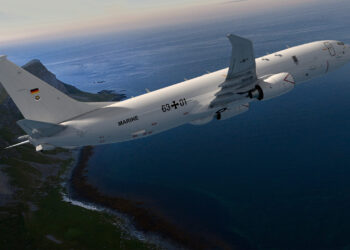,
LONDON: An accident on board a British nuclear submarine that killed two crew members and injured a third was caused by the explosion of an emergency oxygen-creating device, American military officials said on Thursday.
The accident occurred while the HMS Tireless, a hunter-killer submarine which does not carry nuclear missiles, was under the ice cap in the Arctic Ocean during a joint exercise Wednesday between the Royal Navy and the US Navy.
US Navy spokeswoman Lieutenant Li Cohen told AFP that a self-contained oxygen-generation candle, part of the air purification system, exploded, causing the accident.
The British Ministry of Defence (MoD) said, however, that the vessel was “never in any danger”.
Relatives of the two submariners killed, who have not yet been named, have been informed, while the third was airlifted to a hospital at Elmendorf Air Force Base in Anchorage, Alaska, where he is expected to make a full recovery.
“I am deeply saddened at the loss of the crew members from the Tireless,” said Vice Admiral Jay Donnelly, commander of the US Submarine Force.
“Submariners are brothers at sea and we all feel the loss as if it were our own. We stand by to continue to assist in any way we can.”
The Royal Navy and US Navy have been conducting joint exercises in the Arctic since 1986.
Air purification equipment is fitted to all Trafalgar Class submarines, of which Tireless is one of seven in the Royal Navy.
Oxygen-generation candles create the gas through a chemical reaction, and some of the candles burn at high temperatures during the reaction.
The defence ministry said the equipment had a 100 percent safety record to date, but as a precaution its use on other submarines has been restricted until safety checks can be carried out.
“The submarine, HMS Tireless, was never in any danger, its nuclear reactor was unaffected, it quickly surfaced and is completely safe,” the MoD said in a statement on Wednesday.
“The ship's company dealt with the incident quickly and professionally and, as a result, there is only superficial damage to the forward compartment …
“The crew are trained in surfacing quickly through the ice, and did so in exemplary fashion.”
HMS Tireless, which is based in Devonport, in Plymouth, southwest England, was launched in 1984, but the air-purification machinery was given an update in 2001.
The vessel has had a controversial history, having to dock in the British overseas territory of Gibraltar in May 2000 after a coolant leak was discovered in its nuclear reactor. It remained there for nearly a year, sparking tens of thousands of people to protest in neighbouring Spain.
A spokesman for the defence ministry said that the coolant leak in 2000-2001 was entirely unrelated to Wednesday's incident, and described the 2001 update to the air-purification machinery as “routine”.
The MoD is now set to conduct an investigation into the accident in order to prevent it re-occurring.
Several incidents in recent years have highlighted the dangers faced by submariners.
In September last year, two submariners died and one was injured in a fire on board the Russian nuclear submarine the Saint Daniel of Moscow in the Barents Sea near Norway.
In February 2003, it emerged that an Australian submarine, the HMAS Dechaineux, was just 20 seconds from sinking to the bottom of the Indian Ocean with 55 sailors on board, prompting safety fears.
The biggest submarine catastrophe was the sinking of Russia's Kursk in August 2000, also in the Barents Sea, in which 118 crew died.









